Your Cart is Empty
Free Shipping on All Subscriptions Worldwide
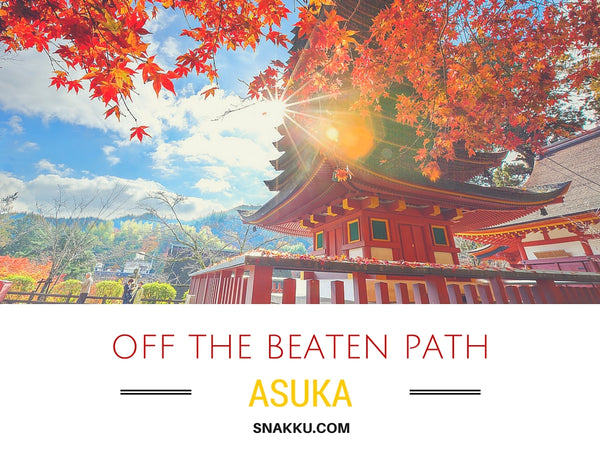
Japan is one of the oldest countries in the world, so there’s always so much to see and do. But very few people actually know where it all started.
“Off The Beaten Path” is a series that explores some of the lesser known yet amazing places in Japan. So far, we’ve explored Nakasu (中洲), the hidden foodie mecca of Japan, Matsumoto(松本), the tranquil castle town in the Japanese alps, Kiso-ji(木曽谷), the ancient highway that was used by the samurais, and Kurokawa (黒川), a hidden hot spring village in the mountains. Today we go back to where it all started, to where Japan was born: Asuka (飛鳥).
Asuka is located in central Japan, just south of Nara
Official history states that Japan was founded in 660 BCE by Emperor Jimmu. Japan’s imperial line is also the oldest continuous monarchy in the world, with the current emperor being the 125th emperor of Japan. This makes Japan one of the oldest countries in the world.
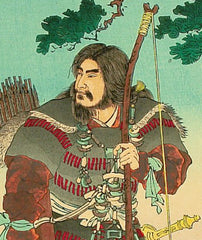
Emperor Jimmu depicted in Japanese art
But it wasn’t until 538AD that modern day Japan began to emerge in Asuka (飛鳥). Until then, Japan was divided into smaller clan-controlled regions. This all changed with the rise of the Yamato clan. They started to conquer neighboring clans, take control of their lands, and centralize their powers. And thus the first capital of Japan was born in Asuka (25km south of modern-day Nara).
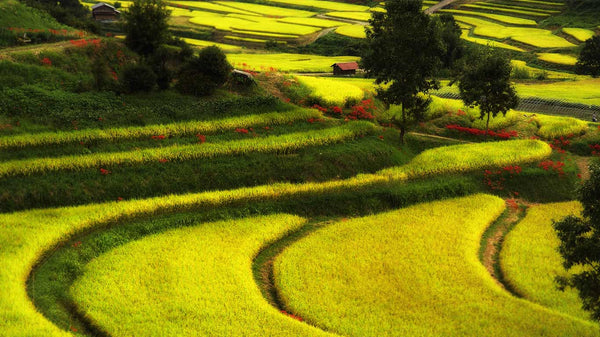
Rolling rice fields in Asuka © MarianJones
Today, Asuka is a small tranquil town with a population of around 6,000. While modern day Asuka is small, it is one of the most historic places in Japan and is dotted with tons of historical sites.
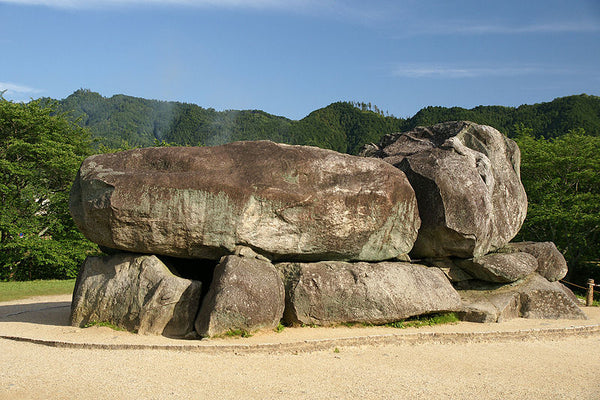
Ishibutai Kofun

Inside Ishibutai Kofun
If you visit the area, you will see that all around Asuka are massive granite stone structures. Some are considered to be the burial grounds of emperors and members of the Yamato clan. The most famous of these is the Ishibutai Kofun (石舞台古墳), which is believed to be the tomb of Soga Umako, a powerful Japanese ruler. Visitors can walk inside the tomb and see the massive rock structure from the inside.
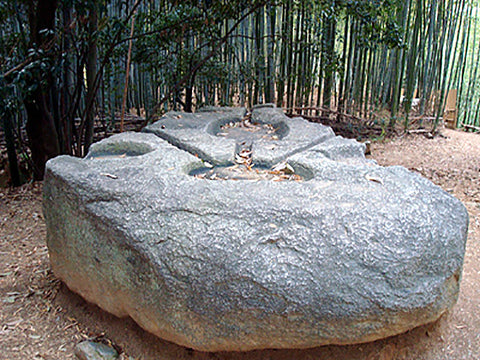
Sakahuneishi

Masuda no Iwafune
There are other stone structures, like the Sakahuneishi, which was used for the simple yet important task of producing sake. There are also mysterious stone structures like the Masuda no Iwafune, which is a colossal stone with two square holes carved in the middle. Nobody knows what this stone was used for, or how it got there.

Asuka-dera
Asuka-dera (飛鳥寺), also known as Hōkō-ji (法興寺), is the first and oldest Buddhist temples in Japan. Buddhism was introduced to Japan around 538. Asuka-dera was built shortly afterward in 588 at the behest of Soga Umako (a powerful Yamato clan leader). His clan is considered to be the one that introduced and strongly supported Buddhism in Japan.

Oka-dera
Oka-dera (岡寺) is another major Buddhist temple and was founded by the famous Buddhist monk Gien in the 7th century. This is the first Buddhist temple in Japan to be used for a specialized purpose of getting rid of bad luck.

Hasedera

Hasedera Temple Complex
Hasedera Temple (長谷寺) was founded in 686 and serves as the head of the Bunzan Shingon Buddhism sect. The temple complex has over 30 building built alongside the mountain of Asuka. Don’t miss the amazing view from the main temple balcony, overlooking the surrounding area.
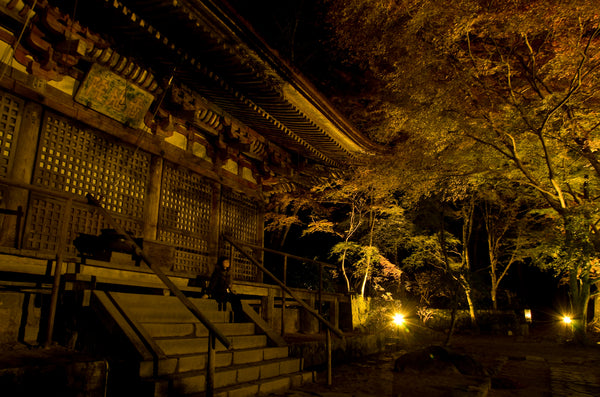
Muroji Temple at night © H-Shoji

Muroji Temple © Kyoshiok
Muroji Temple (室生寺) is a large temple complex located in the densely forested mountainside, east of Asuka. The legend goes that when Emperor Kammu fell sick in the late 8th century, priests came to this area to pray for his recovery. Once his health improved, the emperor ordered that Muroji temple be built in the location to preserve the holy spirit. Historically, women were not allowed to enter a temple complex, but Muroji was the first temple to allow both genders to enter.

Autumn view of Tanzan temple complex © DulcetFaber
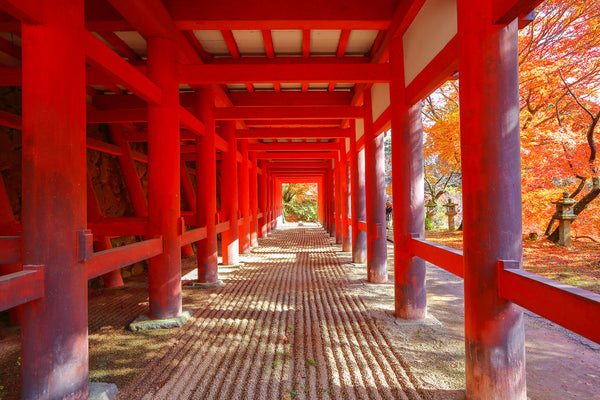
Tanzan Shrine wooden supports © JB

Lanterns on the balcony of Tanzan © OshinKolor
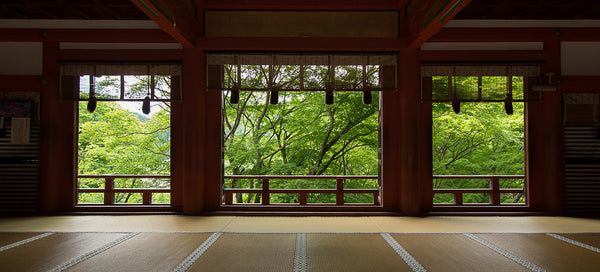
This is why Tanzan is one of the most beautiful places in Japan © Walkkyoto
Tanzan Shrine (談山神社) is the resting place of Fujiwara Kamatari, the founder of the powerful Fujiwara family which controlled Japan from 794-1185. The temple was built in 619 and is considered to be one of the most beautiful temples in all of Japan. This shrine is a must visit if you are in the area.
If you enjoyed this post, don't miss these other popular posts:
Comments will be approved before showing up.